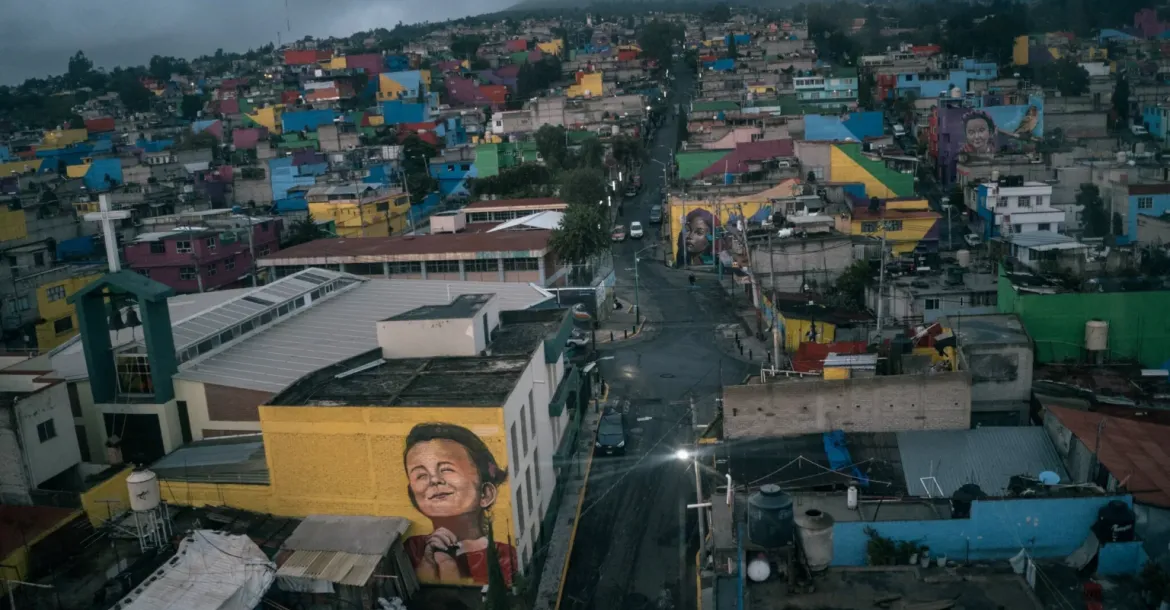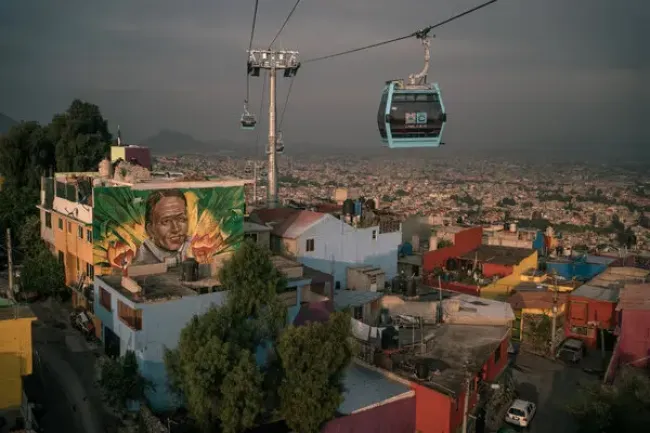Pablo picasso paintings celebrate, how many siblings did frida kahlo have
What Role Does Art Play in the Uplifting of a Disadvantaged Community?
Iztapalapa, Mexico City’s most populous neighborhood, has benefited from a new cableway and hundreds of massive paintings, yet poverty and violence against women remain widespread problems.
From atop a cable car, the city looks like a vast expanse of concrete punctured only by skyscrapers and the ruins of long-gone volcanoes. In the borough of Iztapalapa, a maze of narrow streets and lanes, the cinder block dwellings blanket the hillsides in drab gray.
However, a surprising flash of color appeared on a nearby rooftop in the form of a monstrous monarch butterfly resting on a purple blossom. A toucan and a scarlet macaw perch high above the route of Mexico City’s newest cable car. Later, a young girl in a red outfit with closed eyelids is depicted on a canary yellow wall. She appears to be in complete joy.
According to city officials, the 6.5-mile line, which opened in August, is the world’s longest public cableway. The cable car not only cuts commuting times in half for many residents of the city’s most populous district, but it also boasts a unique feature: a wall covered in flamboyant murals created by a slew of local artists, many of which can only be seen from the skyline.
Music teacher César Enrique Sánchez del Valle, who was riding the cable car home one recent Tuesday afternoon, stated, “There are paintings and murals all along the route.” “Something unexpected is great,” she said.
Iztapalapa’s administration has spent the last three years hiring 140 painters to cover the neighborhood in nearly 7,000 pieces of public art, bringing a burst of color to one of Mexico City’s most crime-ridden neighborhoods.
Clara Brugada Molina, the borough’s mayor, stated, “People want to recover their heritage, the history of the area.” This area of Iztapalapa transforms into an enormous art gallery.
Iztapalapa is a sprawling neighborhood on the outskirts of Mexico City with 1.8 million residents, many of whom are among the city’s poorest. Many people work in more affluent areas, which caused long journeys before the cable car came along.
While Iztapalapa, like many other Mexican slums, struggles with a lack of basic utilities like running water, it also suffers from a high level of violence that is frequently tied to organized crime.
The mayor’s art project is part of a larger effort to make Iztapalapa a safer place, including the installation of street lighting that have illuminated previously dark main routes.
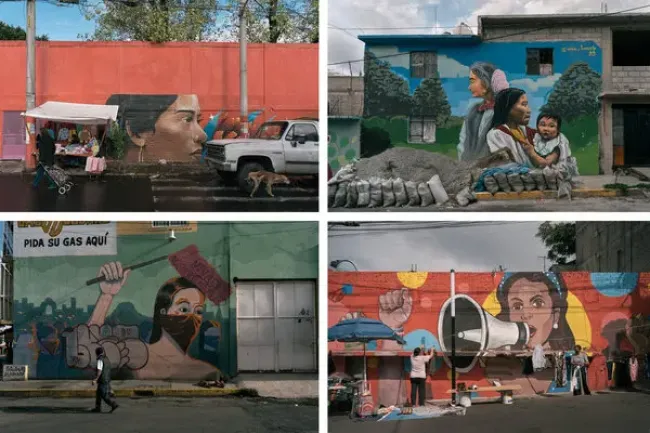
Aztec deities, Emiliano Zapata, and Frida Kahlo are all shown in the murals, with the latter sporting turquoise in her eyes.
However, there are tributes to other local heroes scattered throughout the album as well.
A short-haired woman smiles at the spectator against a scarlet background with blue, yellow, teal, and lime-green figures floating behind her: A world champion boxer from Iztapalapa, Lupita Bautista is a lively character in real life as she is on screen.
Recently, 33-year-old Ms. Bautista walked into her gym wearing vivid green sneakers, a pink beanie, and a rainbow tie-dye sweatshirt with fuchsia glitter scrawled across the front of the shirt.
Aside from producing murals, the government-funded project has also painted the cinder block houses in her training neighborhood in bright hues at a cost that would be out of reach for many of the community’s citizens, she said. “Everything really brings it to life.”
The narrative of Ms. Bautista’s youth in the borough is well-known. There was no electricity when she was a child, so the nights in her Iztapalapa home were illuminated solely by candlelight. Sidewalks and even concrete roads were nonexistent in her community.
The only color she could see was gray, as she recalled.
Robberies and murders were so regular in Ms. Bautista’s neighborhood that her mother forbade her and her sister from leaving the house except to go to school, according to her.
He was afraid, she said. In other words, “I had the distinct impression that something bad was about to happen to me.”
Following the installation of new street lighting, Ms. Bautista reported that she now felt much more secure jogging after hours.
Even before she became a world champion fighter, she used to weave between the neighborhood’s roads and lanes as she grew up. In other words, you no longer have to worry about being startled by a stranger jumping out in front of you as you’re running.
However, despite the efforts of the administration, the majority of the people in Iztapalapa remain terrified: One of the highest percentages of any Mexican city was reported in a June study by the country’s national statistics agency: nearly eight in ten citizens reported feeling insecure.
Iztapalapa, one of the country’s 25 worst towns for femicide (the killing of a woman because of her gender), is especially hostile to women. More cases of sexual assault against women were caught on city security cameras in Iztapalapa between 2012 and 2017 than in any other Mexico City neighborhood, according to a report released by the National Autonomous University of Mexico in 2019.
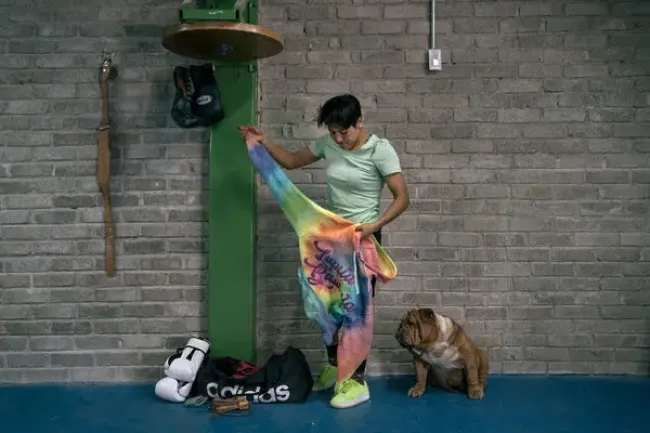
According to the mayor, it was this type of gender-based violence that sparked the painting and lighting initiative in the first place, so that women would feel comfortable walking home after work. Women are prominently featured in several of the paintings, whether they’re locals like Ms. Bautista or historical characters and feminist icons.
Ms. Brugada stated, “We’re attempting to reclaim the streets for women.”
The technique, however, is not universally accepted.
She was born in Iztapalapa when it was still a rough village with wide fields where farmers farmed crops. Daniela Cerón, 46, is now a successful businesswoman.
Ms. Cerón observed, “It was like we were in a small town.” A magnificent hill used to be visible from here.
The region began to quickly urbanize in the 1970s.
As Ms. Cerón explained, “you’d see a little bit of light here, a little bit of light there.” “It wasn’t until boom that it started getting crowded.”
In addition to the influx of new residents from rural areas and families moving out of Mexico City’s slums, there was also an increase in crime. Having to deal with the prejudice of living in a religiously orthodox community was especially difficult for Ms. Cerón, who is transgender and attends an annual re-enactment of the Crucifixion in Iztapalapa that draws millions of people.
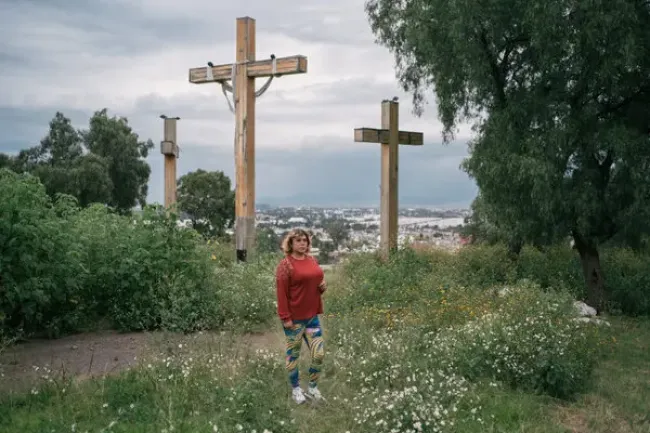
Ms. Cerón stated, “That religious stigma weighs against you.”
She thinks the murals are lovely, but she doesn’t think they’ve done much to make her feel more secure.
“It doesn’t mean anything to me if they’re robbing or murdering people three blocks away,” she remarked.
A local artist, Alejandra Atrisco Amilpas, has painted over 300 murals in Iztapalapa and believes they may boost pride in the community. However, she recognizes that murals can only go so far.
According to her, “paint” can be very beneficial, but “unfortunately” it won’t be able to alter social issues like poverty.
It won’t change your mind about the woman being beaten up on the corner because of a mural.
Because she is gay, Ms. Atrisco had to deal with men painters who doubted her ability and municipal politicians who forbade her from creating murals on the LGBT community.
“Violence against women, sure, but against lesbians, no,” she mused, wistfully.
In spite of this, Ms. Atrisco feels that by depicting the people of Iztapalapa in full color, she can have a positive impact on the lives of the people there.
In her words, “every day is different,” she said. “Every day is a new wall and a new tale.” A dream creator is someone who makes other people’s dreams come true in a small way.
